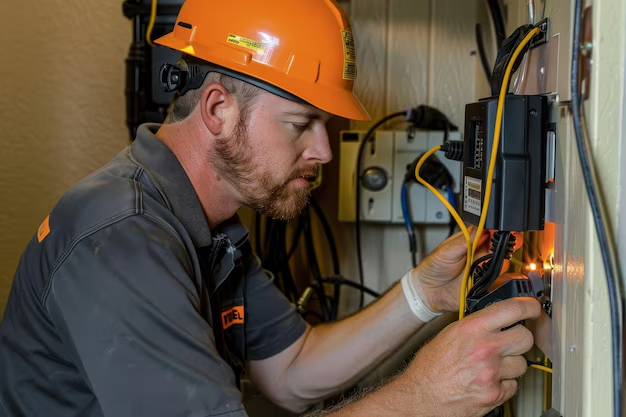How Safe Is a Career as an Electrician? Exploring the Risks and Opportunities
When considering a career as an electrician, many people wonder, Is being an electrician dangerous? This concern is valid and sensible, given the nature of the work that involves potentially hazardous tasks. Let's delve into the realities of the profession while also highlighting the support systems available for those pursuing this critical and rewarding career.
Understanding the Risks
Electricians are responsible for installing, maintaining, and repairing electrical systems, which presents a unique set of risks. These risks can be divided into several key categories:
Electrical Hazards: The most obvious danger comes from working directly with electricity. Exposure to electrical currents can result in shocks, burns, and, in severe cases, life-threatening electrocution.
Exposure to Heights: Electricians often work on ladders or scaffolding to install or repair wiring in high places, increasing the risk of falls.
Confined Spaces: Many electrical systems are located in tight, enclosed spaces, which can present additional safety challenges.
Tools and Equipment: The use of power tools and heavy equipment also adds to the potential for injury if not handled properly.
Despite these risks, the field of electrical work is carefully regulated to ensure safety. In fact, rigorous training programs and safety protocols have been established to minimize these hazards. Electricians must complete comprehensive apprenticeships, which include detailed safety training before they are fully licensed.
Safety Protocols and Training
Modern standards demand that electricians adhere strictly to safety codes and best practices. These protocols are designed to mitigate risks and include:
- Protecting workers with safety gear such as insulated gloves, helmets, and proper footwear.
- Following lockout/tagout procedures to ensure equipment is not inadvertently energized.
- Using ground-fault circuit interrupters (GFCIs) to prevent electrical shock.
Continuous education and training are integral to maintaining a safe working environment. Many electricians participate in ongoing certification and refresher courses to stay up to date with the latest technological advancements and safety innovations.
Opportunities for Growth and Assistance
While being an electrician involves certain dangers, the profession is also highly rewarding and offers various growth opportunities. Here are some ways to ease the journey for those entering the field:
Financial Assistance for Electricians
Beginning a career in electrical work often requires significant investment in education and tools. Fortunately, several financial aids and programs are available:
Government Scholarships and Educational Grants: Many federal and state programs provide grants and scholarships that help cover tuition fees for electrical training.
Apprenticeship Programs: Many vocational schools offer paid apprenticeships, which provide on-the-job training while compensating participants.
Low-Interest Student Loans: Specialized loans are an option for those needing financial assistance to pursue their education in electrical work.
Debt Relief Solutions
Once established in the field, electricians benefit from an excellent job outlook and competitive salaries. However, for those with educational debt:
Debt Consolidation Services: Combining multiple educational loans into a single payment plan can simplify and potentially reduce monthly obligations.
Credit Counseling: Professional advice may help manage finances more effectively, ensuring loans are repaid in a structured way.
Career Advancement
Electricians can advance their careers by:
Specialization: Pursuing additional credentials in areas such as solar energy or industrial electrical systems can open new career paths.
Entrepreneurship: Many electricians proceed to establish their own businesses, providing autonomy and potentially higher earnings.
Becoming an electrician entails managing certain risks but is ultimately a fulfilling and secure career choice. With dedication, proper training, and the aid of supportive programs, aspiring electricians can successfully mitigate these risks to build a promising professional future.
🛠️ Financial and Educational Resources for Aspiring Electricians
- 🎓 Government Scholarships: Federal grants to cover educational expenses.
- 🏛️ Community College Grants: Local financial aid options for technical training.
- 💸 Apprenticeship Stipends: Earn while you learn through paid apprenticeships.
- 💡 Specialization Credentials: Certifications in emerging technologies like solar or smart grid systems.
- 📈 Debt Consolidation Options: Services to manage and reduce educational debt.
- 🗣️ Credit Counseling Services: Financial advising to help manage and pay off student loans efficiently.
Electricians are essential in powering our world safely and efficiently. With adequate preparation and support, this career can offer both personal and professional fulfillment.
